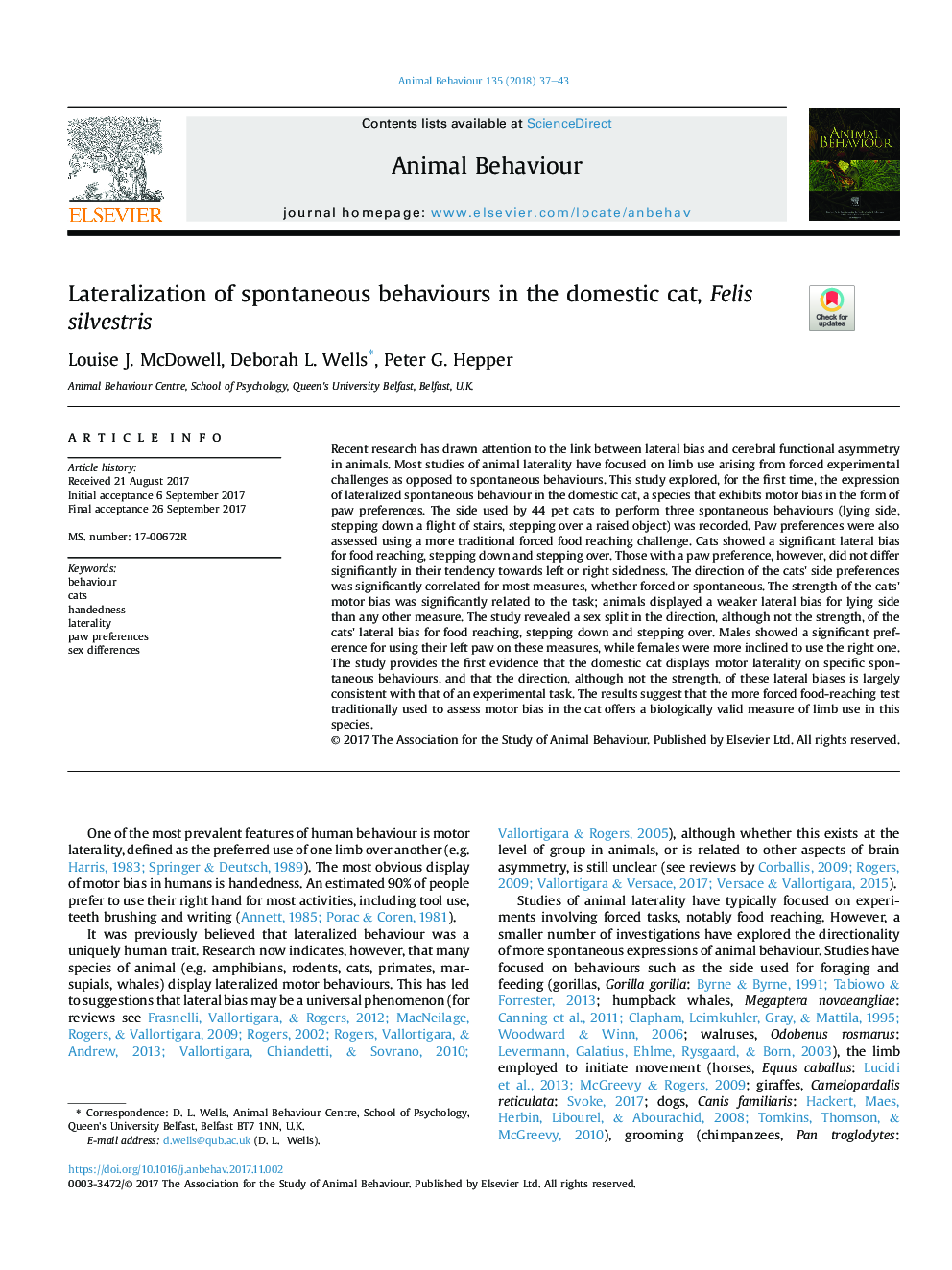| کد مقاله | کد نشریه | سال انتشار | مقاله انگلیسی | نسخه تمام متن |
|---|---|---|---|---|
| 8488716 | 1552193 | 2018 | 7 صفحه PDF | دانلود رایگان |
عنوان انگلیسی مقاله ISI
Lateralization of spontaneous behaviours in the domestic cat, Felis silvestris
دانلود مقاله + سفارش ترجمه
دانلود مقاله ISI انگلیسی
رایگان برای ایرانیان
کلمات کلیدی
موضوعات مرتبط
علوم زیستی و بیوفناوری
علوم کشاورزی و بیولوژیک
علوم دامی و جانورشناسی
پیش نمایش صفحه اول مقاله

چکیده انگلیسی
Recent research has drawn attention to the link between lateral bias and cerebral functional asymmetry in animals. Most studies of animal laterality have focused on limb use arising from forced experimental challenges as opposed to spontaneous behaviours. This study explored, for the first time, the expression of lateralized spontaneous behaviour in the domestic cat, a species that exhibits motor bias in the form of paw preferences. The side used by 44 pet cats to perform three spontaneous behaviours (lying side, stepping down a flight of stairs, stepping over a raised object) was recorded. Paw preferences were also assessed using a more traditional forced food reaching challenge. Cats showed a significant lateral bias for food reaching, stepping down and stepping over. Those with a paw preference, however, did not differ significantly in their tendency towards left or right sidedness. The direction of the cats' side preferences was significantly correlated for most measures, whether forced or spontaneous. The strength of the cats' motor bias was significantly related to the task; animals displayed a weaker lateral bias for lying side than any other measure. The study revealed a sex split in the direction, although not the strength, of the cats' lateral bias for food reaching, stepping down and stepping over. Males showed a significant preference for using their left paw on these measures, while females were more inclined to use the right one. The study provides the first evidence that the domestic cat displays motor laterality on specific spontaneous behaviours, and that the direction, although not the strength, of these lateral biases is largely consistent with that of an experimental task. The results suggest that the more forced food-reaching test traditionally used to assess motor bias in the cat offers a biologically valid measure of limb use in this species.
ناشر
Database: Elsevier - ScienceDirect (ساینس دایرکت)
Journal: Animal Behaviour - Volume 135, January 2018, Pages 37-43
Journal: Animal Behaviour - Volume 135, January 2018, Pages 37-43
نویسندگان
Louise J. McDowell, Deborah L. Wells, Peter G. Hepper,